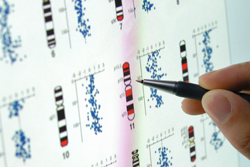Gene-gating key to elucidating formation of tumours
RNA, or ribonucleic acid, is a chain of molecules that works together with DNA. And as most of us know by now, DNA, or deoxyribonucleic acid, is the hereditary material in humans and almost all other organisms. It makes us what and who we are. MicroRNAs belong to a class of small non-coding RNAs that regulate gene expression by acting on target messenger RNAs (mRNAs). They are present in cellular proliferation, stress response, apoptosis, development and differentiation. However, when their own expression is disturbed they are seen as modulating factors in diseases such as gastric cancer, lung cancer and lymphocytic leukaemia. The EU-funded project 'Structural and biophysical mechanism of microRNA nuclear export' (MicroRNA Export) used a combination of structural, biochemical and biophysical approaches as well as X-ray crystallography and nuclear magnetic resonance to study the structure and biophysical properties of the nuclear export complex of microRNA. Integrating all the steps along a gene expression pathway involves a complex network of interactions. For a particular group of genes, this integration process, essential to the gene expression pathway, is termed 'gene-gating'. Project researchers have worked to understand the biological process of gene-gating at a molecular level. Earlier experiments using novel-binding assays gave a boost for this work to investigate the structure and function of the small nuclear localised protein Sus1 in gene-gating. Results from this body of research have been published in the Journal of Biological Chemistry. Although initial results suggested Sus1to be the structural and functional key in the gene-gating process, further work suggested it is just a component of separate sub-complexes rather than a single chain linking the two complexes. This has helped the researchers to understand how the SAGA and TREX-2 complexes are involved in gene-gating.







